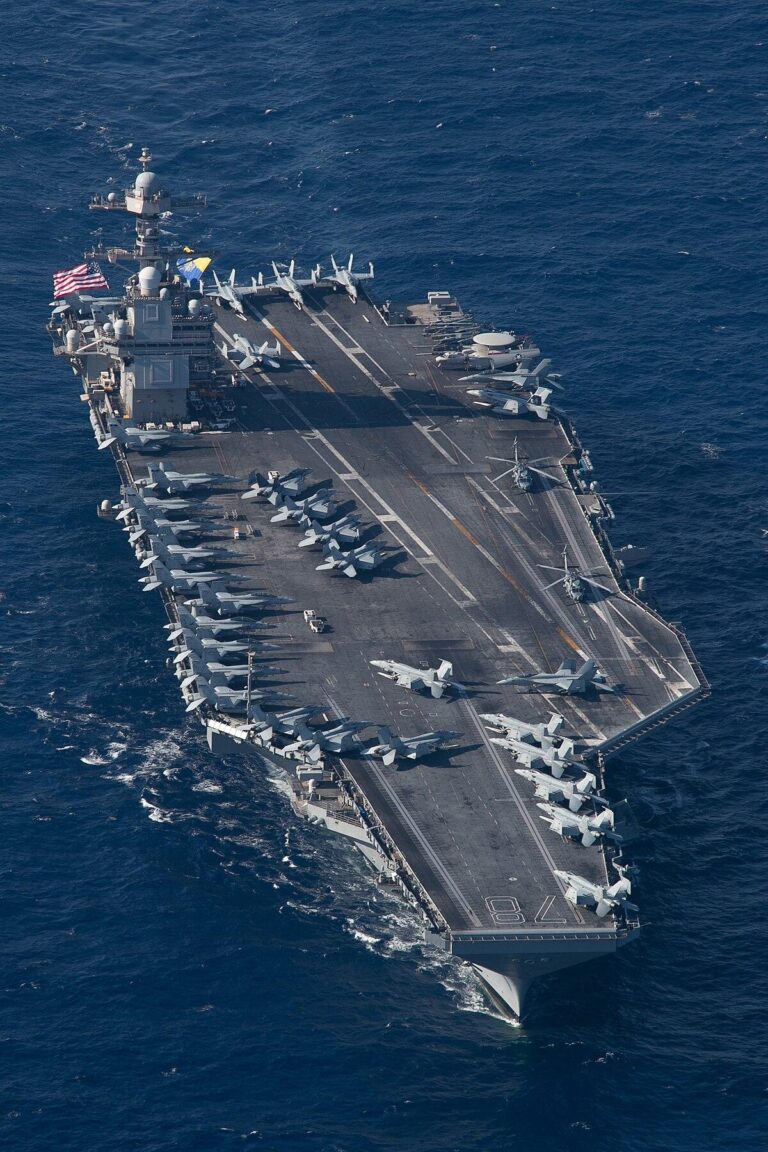In a strategic move signaling heightened military cooperation, key US allies in Europe are joining forces to project aircraft carrier power near China, underscoring growing geopolitical tensions in the Indo-Pacific region. This collaborative display of naval strength, reported by Newsweek, highlights the increasing importance of transatlantic partnerships in countering Beijing’s expanding influence. As nations recalibrate their defense postures, the deployment of carrier strike groups serves both as a deterrent and a statement of commitment to maintaining a balance of power in one of the world’s most critical maritime domains.
US Allies in Europe Strengthen Naval Presence to Counter China’s Influence
In a strategic shift aimed at balancing growing Chinese maritime assertiveness, several European NATO members have escalated their naval operations beyond the Atlantic. This includes the deployment of advanced aircraft carriers and frigates, signaling a clear demonstration of power far from their home waters. The move aligns with a broader transatlantic initiative to maintain open sea lanes and reinforce the rules-based international order in the Indo-Pacific region.
Naval forces from countries such as the United Kingdom, France, and Germany are conducting joint exercises emphasizing:
- Carrier strike group coordination to enhance rapid response capabilities;
- Anti-submarine warfare drills to counter stealth threats;
- Logistical support frameworks for sustained deployments far from European ports.
| Country | Naval Assets Deployed | Primary Mission | |
|---|---|---|---|
| United Kingdom | HMS Queen Elizabeth (CV), Type 45 Destroyers | Power projection & maritime security | |
| France | Charles de Gaulle (CV), FREMM Frigates | Joint training & anti-submarine operations | |
| Germany | Baden-Württemberg-class Frigates, Type 212A Submarines | Sustainment operations & submarine defense |
Strategic Implications of Projecting Aircraft Carrier Power in the Indo-Pacific Theater
Projecting carrier power into the Indo-Pacific theater marks a pivotal shift in alliance dynamics and strategic posturing. The presence of allied aircraft carriers in proximity to China signals a robust, unified front aimed at balancing regional influence and deterring potential aggression. With rising tensions over maritime routes and contested territories, such deployments serve as a powerful message of commitment to freedom of navigation and adherence to international law. Moreover, this projection enhances interoperability among allied navies, ensuring swift, coordinated responses to crises and bolstering collective security frameworks.
Key strategic benefits include:
- Strengthening deterrence capabilities beyond the traditional U.S. Navy reach
- Facilitating rapid humanitarian assistance and disaster response in the region
- Empowering coalition partners through shared intelligence and joint exercises
- Signaling resolve to maintain a balance of power amid China’s assertive posture
| Allied Nation | Carrier Deployment | Strategic Role | |
|---|---|---|---|
| United Kingdom | HMS Queen Elizabeth | Power projection and joint training operations | |
| France | Charles de Gaulle | Maritime security and multilateral presence | |
| Allied Nation |
Carrier Deployment |
Strategic Role |
|
| United Kingdom | HMS Queen Elizabeth | Power projection and joint training operations | |
| France | Charles de Gaulle | Maritime security and multilateral presence | |
| Australia | HMAS Sydney | Humanitarian assistance and regional engagement |
If you’d like, I can help you with further editing or expanding on this topic!
Recommendations for Enhancing Multinational Maritime Coordination and Response Capabilities
To bolster multinational maritime coordination near contested regions, it is crucial to invest in streamlined communication protocols that ensure real-time intelligence sharing between allied naval forces. Establishing unified command centers across partner nations can facilitate rapid decision-making and mitigate risks associated with operational ambiguities. Furthermore, joint training exercises, particularly focusing on integrated carrier strike group operations and anti-submarine warfare, should be intensified to enhance interoperability under high-pressure scenarios.
Key strategic improvements include:
- Deployment of advanced satellite and surveillance systems tailored for littoral monitoring
- Standardization of maritime cyber defense frameworks across allied fleets
- Development of a shared maritime logistics network to expedite refueling and resupply efforts
- Enhancement of rapid deployment capabilities by incorporating multi-national crew composition in carrier strike groups
| Capability | Current Status | Recommended Action |
|---|---|---|
| Joint Command Centers | Limited integration | Expand to regional hubs with 24/7 operations |
| Surveillance Technologies | Fragmented assets | Unified satellite data sharing initiatives |
| Cybersecurity Measures | Varied protocols | Adopt coalition-wide cyber defense standards |




